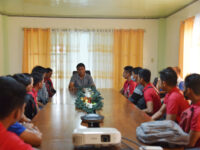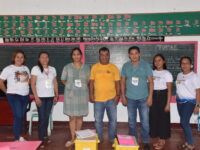State-run National Electrification Administration (NEA) on Monday rolled out the third phase of the implementation of the NEA Business Intelligence Technology (BIT) system, signaling the completion of the project.
Speaking at the NEA BIT Phase 3 Go Live Program held at H.E.S. Auditorium, NEA Building in Quezon City, Administrator Edgardo Masongsong said the project was designed to address the current situation and progress towards strategies to assist the 121 electric cooperatives (ECs) in rural electrification.
“We celebrate that all FITP Modules are now implemented: the NEA BIT is complete for the Finance, Institutional, and Technical and Project Monitoring Modules — paving the way to the new NEA wherein information derived from reports infused into the NEA are maximized to support our 7-point agenda,” he said.
Masongsong said the information generated from the web portal would assist the NEA in gaining timely and holistic analysis on the EC’s current state and business operational performance.
“It is our tool in fulfilling our mandated mission under Republic Act 10531,” the NEA chief said.
The NEA BIT Phase 3 covered Finance, Data Entry Templates (DETs) designed for generation to cater the data requirements of not only the NEA, but also for the Energy Regulatory Commission (ERC) and Power Sector Assets and Liabilities Management Corporation (PSALM).
“The DETs submitted by the ECs via the NEA BIT are the official EC data submission and used as a single source of truth specially on critical data elements,” Masongsong said.
“At the NEA, we need to challenge the data to truly reach the maximum potential of NEA BIT. This means deriving from the meaningful reports and analytics generated by the system to be able to provide strategic interventions to the electric cooperatives,” the administrator added.
Launched on August 14, 2017, Phase 1 of the NEA BIT focused on the institutional and project monitoring reports specifically the overall energization status, the Sitio Electrification (SEP) and the Barangay Line Enhancement Programs (BLEP).
The NEA BIT Phase 2, meanwhile, covered the technical and rates, allowing the electrification agency to gain deeper insights on EC submitted data on energy utilization, system loss and sales from the information that has been generated.
“With the use of this technology, we are given the avenue for the provision of timely interventions and to act decidedly, with dynamism and efficiency, towards the realization of our core services for our partner electric cooperatives,” Masongsong said.
Funded by the World Bank with technical assistance from IT firm Indra, the NEA BIT was a result of the collaboration between the NEA and the ECs through discovery and design sessions back in 2015. A series of workshops had been undertaken on the use of the NEA BIT specifically on the DET for the preparation and submission of reports.







